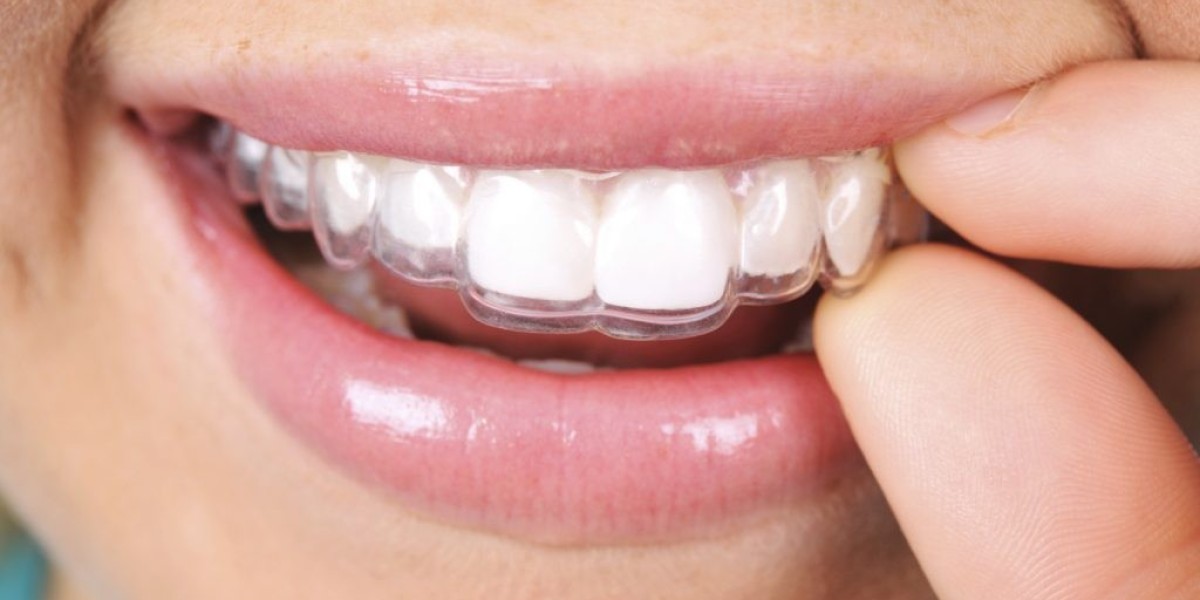Invisible braces have revolutionized the world of orthodontics. They provide a discreet and effective way to straighten your teeth, leaving behind the clunky metal braces of the past. However, with so many options on the market, you may wonder how to choose the right type of invisible braces for you. By considering factors like your dental needs, lifestyle, and budget, you can make a well-informed decision.
What Are Invisible Braces?
Invisible braces are a modern alternative to conventional metal braces. They are designed to correct misaligned teeth while being undetectable. Unlike conventional braces, which use metal brackets and wires, invisible braces are made from clear materials that blend in with the natural color of your teeth. This makes them a popular choice among individuals that want to straighten their teeth without the noticeable appearance of metal braces.
There are different types of invisible braces, such as clear aligners, lingual braces, and ceramic braces. Each has its unique benefits, and selecting the right one depends on your specific dental needs and lifestyle.
Types of Invisible Braces
When choosing invisible braces, it's essential to know the options available. Let's explore the most common types:
1. Clear Aligners (Invisalign Braces)
Clear aligners, like Invisalign braces, are one of the most popular options for invisible braces. These aligners are custom-made trays that fit snugly over your teeth. They are removable, allowing you to eat, drink, and clean your teeth without any restrictions. Invisalign braces are highly effective at treating mild to moderate orthodontic issues, such as crooked teeth, gaps, and overbites.
Since the aligners are clear, they are almost invisible when worn, making them a popular choice for individuals who value aesthetics. Treatment with invisible teeth braces involves wearing a series of aligners.
Pros of Clear Aligners:
- Removable, allowing for easy eating and cleaning.
- Virtually invisible when worn.
- Comfortable, with no metal wires or brackets.
- Customizable and highly effective for various orthodontic issues.
Cons of Clear Aligners:
- Requires discipline to wear 20-22 hours a day.
- May not be suitable for severe misalignments.
- Can be more expensive than other options.
2. Lingual Braces
Another option for invisible braces is lingual braces. These are similar to traditional metal braces, but they are attached to the back (lingual side) of your teeth instead of the front. This makes them completely hidden from view. Lingual braces work just like traditional braces in terms of effectiveness and treatment duration, making them suitable for a wide range of orthodontic issues. While lingual braces are invisible from the outside, they are more uncomfortable than clear aligners or ceramic braces because the brackets and wires sit close to your tongue.
Pros of Lingual Braces:
- Completely hidden from view.
- Suitable for complex orthodontic cases.
- Provides the same results as traditional braces.
Cons of Lingual Braces:
- May cause discomfort or irritation to the tongue.
- More challenging to clean than clear aligners.
- Typically more expensive than traditional braces.
3. Ceramic Braces
Ceramic braces are another excellent choice for invisible braces. They function similarly to metal braces but use clear or tooth-colored brackets, making them much less noticeable. The wires can also be tooth-colored to blend in further. Ceramic braces are an excellent option for individuals with more severe misalignment issues who still want a more discreet appearance than traditional metal braces. However, ceramic braces are not entirely invisible. They are more noticeable than clear aligners but less obvious than metal braces.
Pros of Ceramic Braces:
- More discreet than metal braces.
- Effective for treating complex dental issues.
- Durable and less likely to stain.
Cons of Ceramic Braces:
- Can be more visible than clear aligners.
- Requires proper cleaning to avoid staining.
- Slightly more expensive than metal braces.
Factors to Consider When Choosing Invisible Braces
Now that you know the different types of invisible teeth braces, it's time to consider the factors that will help you make the right choice. Here are a few things to think about:
1. Dental Issues
The type of invisible braces you need will depend on the complexity of your dental issues. If you have mild to moderate alignment problems, clear aligners like Invisalign braces may be sufficient. However, if you have more complex issues, such as severe overcrowding or bite problems, you may need the strength of lingual or ceramic braces.
2. Aesthetics
If the appearance of your braces is a significant concern, clear aligners are the best option since they are virtually invisible. Lingual braces are also completely hidden from view, but they may cause some discomfort. Ceramic braces are less noticeable than metal braces but not entirely invisible.
3. Comfort and Convenience
Comfort is another important factor when selecting invisible braces. Clear aligners are generally the most comfortable because they don't have metal wires or brackets that can irritate the inside of your mouth. Lingual and ceramic braces may cause some discomfort, especially during the initial adjustment period.
Additionally, consider how convenient it is to care for your braces. Clear aligners are removable, making it easy to maintain your dental hygiene, while lingual and ceramic braces require more diligent cleaning.
4. Budget
Your budget will also influence your choice of invisible braces. Clear aligners tend to be more expensive than other options due to their advanced technology. Lingual braces are also on the higher end of the cost spectrum, while ceramic braces are typically more affordable than both. It's essential to weigh the cost against the benefits.
Before and After Invisible Braces
If you're unsure if invisible braces are right for you, take a look at before and after invisible braces photos from real patients. These images can give you a realistic idea of the potential results and help you feel more confident about your decision.
Most patients experience significant improvements in their smile, self-confidence, and oral health after completing treatment with invisible braces. Additionally, since invisible braces are discreet, many people won't even realize you're wearing them during your treatment.
Conclusion
Selecting the right type of invisible braces involves considering several factors, including your dental needs, aesthetic preferences, comfort, and budget. Whether you opt for clear aligners or ceramic braces, each option offers unique advantages. By consulting with an orthodontist, you can determine which type of invisible braces best suits your needs. Remember, the goal is to achieve a healthy, beautiful smile while maintaining your comfort and lifestyle preferences throughout the process.








